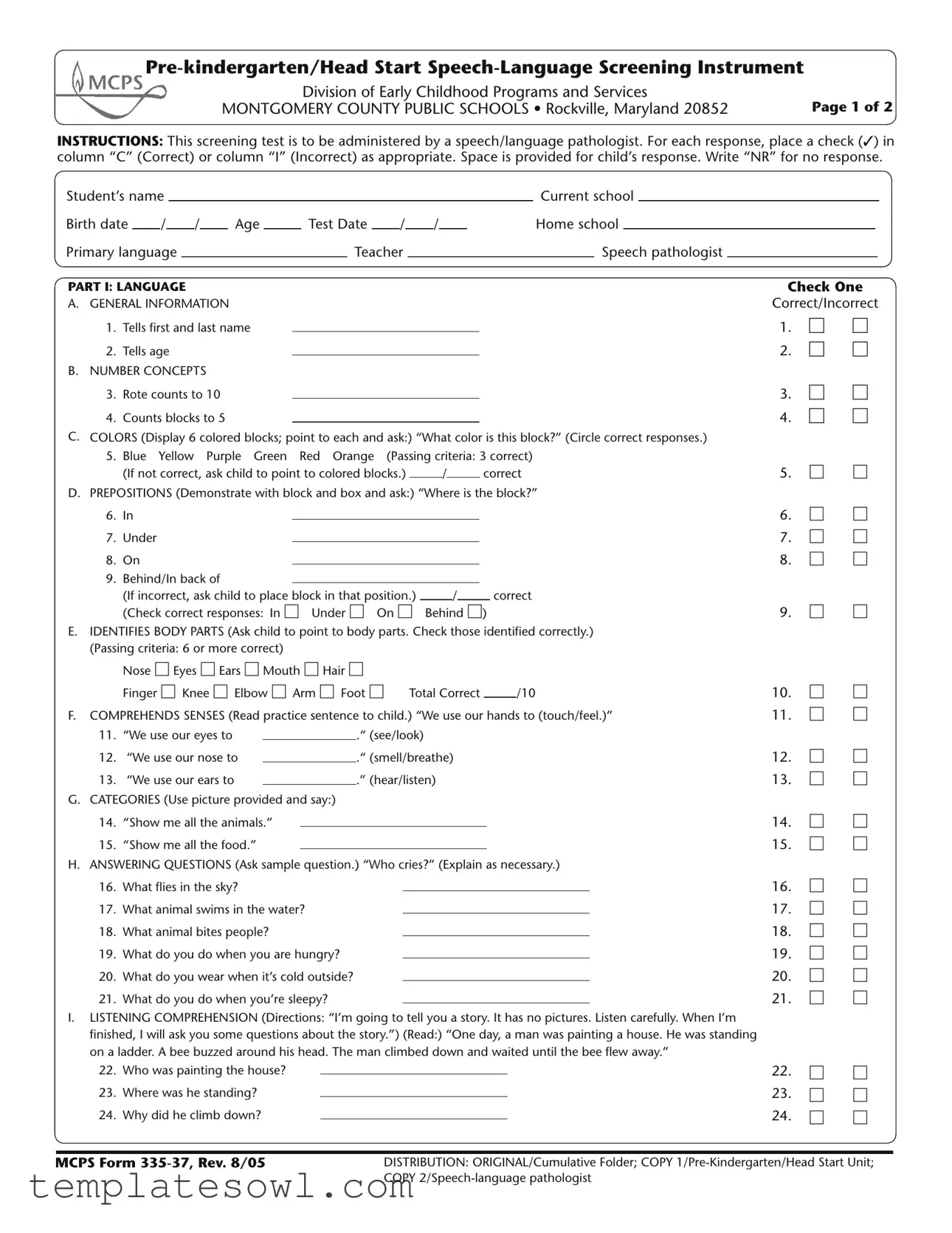What is the MCPS 335 37 Form?
The MCPS 335 37 Form is a Speech-Language Screening Instrument designed for pre-kindergarten and Head Start programs. It is administered by a speech or language pathologist to assess a child's communication skills in several areas, including language comprehension, speech articulation, and auditory memory.
Who administers the MCPS 335 37 Form?
The screening test must be administered by a certified speech-language pathologist. Their expertise ensures that the assessment is conducted effectively and that results are interpreted accurately for each child.
What areas does the screening evaluate?
The form evaluates various aspects of a child's communication abilities, including general information, number concepts, color identification, understanding of prepositions, identification of body parts, comprehension of senses, answering questions, listening comprehension, auditory memory, expressive language, articulation, fluency, voice quality, and hearing capability.
What are the passing criteria for the different sections?
Each section of the screening has specific passing criteria. For example, a child must answer at least three color identification questions correctly and correctly identify six or more body parts. Additionally, the child must follow a set of three directions accurately in the directions following section.
What should be done if a child does not meet the criteria?
If a child does not meet the passing criteria in certain areas, the speech-language pathologist may recommend further observation, additional assessments, or interventions to address any identified concerns, ensuring that appropriate support is provided.
How is the child's progress documented on the form?
The form includes spaces where the pathologist can mark whether each response was correct or incorrect. For sections that require a narrative, such as the expressive language sample, specific responses can be recorded, allowing for a comprehensive view of the child's abilities.
Is there a component for parents or guardians on this form?
The MCPS 335 37 Form primarily focuses on the child's assessment; however, parents or guardians may be involved in discussions about the results and any necessary follow-up actions based on the findings of the screening.
What is the purpose of auditory memory exercises within the screening?
Auditory memory exercises assess a child's ability to remember and recall information presented verbally. This skill is vital for effective communication and language development, as it affects how children follow directions and engage in conversations.
What happens after the screening is completed?
Upon completion of the screening, results are compiled and shared with relevant parties, including teachers and parents. Based on the findings, recommendations for follow-up actions, further assessments, or interventions may be provided to support the child's language and speech development.
How often should the MCPS 335 37 Form be administered?
The frequency of administering the MCPS 335 37 Form can vary based on the individual needs of the child and the policies of the educational institution. It is typically conducted at the beginning of a program and may be repeated as necessary to monitor progress.


